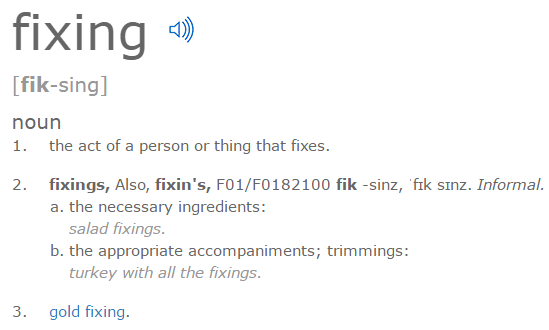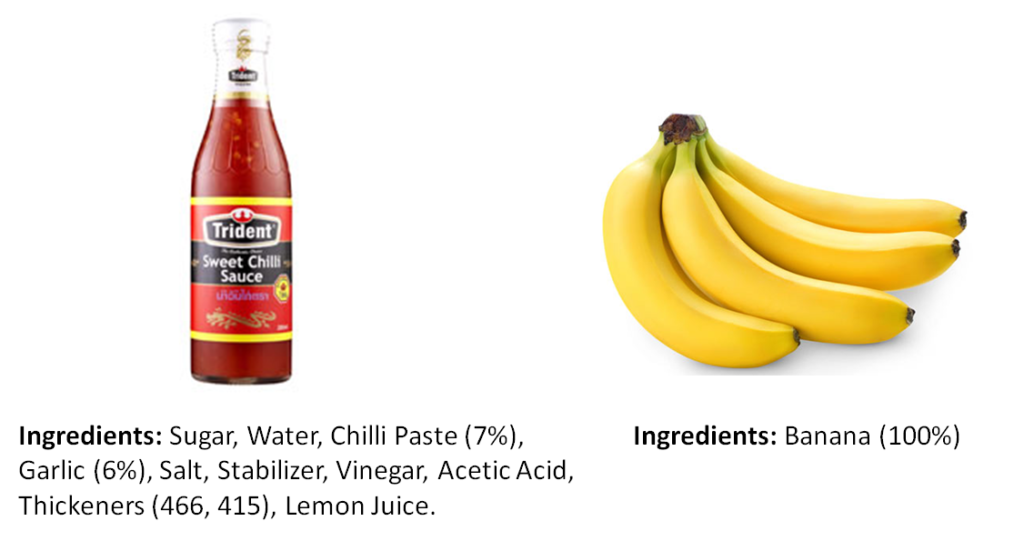As a follow up to Food Diaries: Three Steps To Addressing A Diet from April of this year, I want to delve a little deeper and take you through three essential steps to fixing a diet.
But, before we do, we perhaps need to dissect the terms ‘fixing’ and ‘diet’ to prevent any misconstrued reading or understanding. After all, there is no doubt a hundred different ways to define the terms. Especially when looking at it from a complete black and white perspective.
Defining Fixing

Source: Dictionary.com
How Dictionary.com defines the term is a little different to how a lot of people interpret it. But nonetheless, ‘fixing’ something generally refers to the primordial thought for the pursuit of reverting an item or thing back to its previous state.
But let’s consider the proposition that someone doesn’t want to ‘fix’ their diet in this regard, and rather they wish to merely tweak it. Or, heal it.
Since fixing something is often met with an extreme perspective, especially when it does come to dieting, we want to ensure things stay simple. It is just eating food after all, and not something we want ourselves or our clients to constantly worry about.
Defining Diet
This one is a little more complicated to define. Dictionary.com, even, defines this word via 11 different descriptions. Which is but a small insight into how many ways people can interpret or understand the word.
Source: Dictionary.com (click to view all 11)
Let’s combine a few of them and extrapolate our own meaning. How does “an intake of certain foods that an organism (i.e. you) habitually consumes” sound?
If we run with this definition, we get the knowledge that whatever food you eat habitually, is your diet. So whether its asparagus on toast and one litre of caramel flavoured milk for breakfast, grilled salmon and steamed broccoli for lunch, or ice-cream and orange juice for dinner, we all know what the juice tastes like after ice-cream, and we now all know what ‘diet’ means.

Fixing + Diet = ?
Coupling the two definitions allows us to now formulate the best approach to ‘fixing’ a ‘diet’. And in doing so, we can come up with a few key steps.
Step One: Make It Simple
Occam’s razor, a theory coined by William of Ockham in the 13th Century, explains that the simplest option is usually the most right one. When it comes to fixing a diet, nothing is different here.
By restricting a certain food or certain group of foods or even particular times of the day, is akin to over-complicating things.
To rectify, we want to ensure that there are a myriad of styles of eating. So if 6-8 meals per day works for someone, then that’s cool. If 2-3 meals per day works better for another, then that is also cool. Fasting, even, if that works for someone, then that is totally cool, too.
What matters here is that a plan is created that coincides with a person’s work, school, exercise, and life demand. This is essential. When formulated, it will ensure a constant railing (as opposed to derailing) of the process.
To do this, all that must be assessed is one’s lifestyle. How many hours per day do they have to prepare and eat food? How many hours per day are they engaged in physical activity? How many hours per day do they spend commuting?
Answering these types of questions enables simple deducing for what style of meal frequency works best and the amount necessary for their goals.
Step Two: Focus On One Ingredient
There’s nothing I like more than drizzling some sweet chilli sauce through my stir frys. Not only does it sweeten things up, it also adds just the right amount of spice to it. Its flavor, even, entirely amplified the moment I grate some cheese over all of it.
But if did this every day, for every meal, than I would surely be hindering my efforts in the gym.
Don’t get me wrong, condiments, like sweet chilli sauce, are great, and they do have their place. But to get the most out of any diet, a focus must be made on consuming one ingredient foods for the majority of the time (>70%).
Foods like vegetables, fruits, nuts, meats; the types of foods that lack an ingredients label or come in a packet or jar or tin are what I’m talking about here. Foods that, like a banana for example, on the off-chance that they do come in packaging, only read: 100% banana.

Pro tip: The first ingredient on the label is the one that is the most abundant within the food.
Sticking to these foods can and will always result in satiation and also keep away any of those unideal weight changes.
Step Three: Build Up Your Allowance
We’re no doubt always on the lookout for quick fixes. We love the instant everything lifestyle, but when it comes to our health, we need to look towards the c word.
Consistency.
Just like your bank account before buying that house, you have to put in the time and effort to build it up to a point where you can do something with it. The same goes with your body.
To be able to eat that piece of cake, fries, ice-cream, with peace of mind, you need to have put the steps in place prior to it to allow for deviation. Doing so will provide you with enough allowance for the off-chance that you do go out for dinner with friends, and ensure that you do not have to worry about what you order.

When shooting for consistency, aiming to tick off 4-6 week blocks or three month stints works best here. This is an ideal scenario if looking to save up some of that “calorie cash”.
For example, let’s say that someone has been overweight for five years. For them to build an allowance up, they must first understand that quick fixes are dead-ends, and that allowing the patience that five years may very well be the time it takes to rid the weight and keep it off.
Secondly, they would want to shoot for a one month stint of consistent “fixed dieting”. If achieved, their bank allowance will build alongside the freedom of their mind.
Wrap Up
Whatever lifestyle yours may be, eating food is never supposed to be a stressful or complicated task. By incorporating simple tweaks and adjustments to your daily habits, it can provide for your most ideal results.
So please, quit avoiding food groups, times of the day, and start to focus on eating real, one ingredient proper nutrition with consistency into your oral cavity.
Related articles:
Food Diaries: Three Steps To Addressing A Diet
A Simple Approach To Food For The Body You Want
Fasting: Why You Should Give It A Go
Is Bread Bad For You?
3 Reasons Why You May Be Fat
Information Overload And A Myth That Needs To Die



